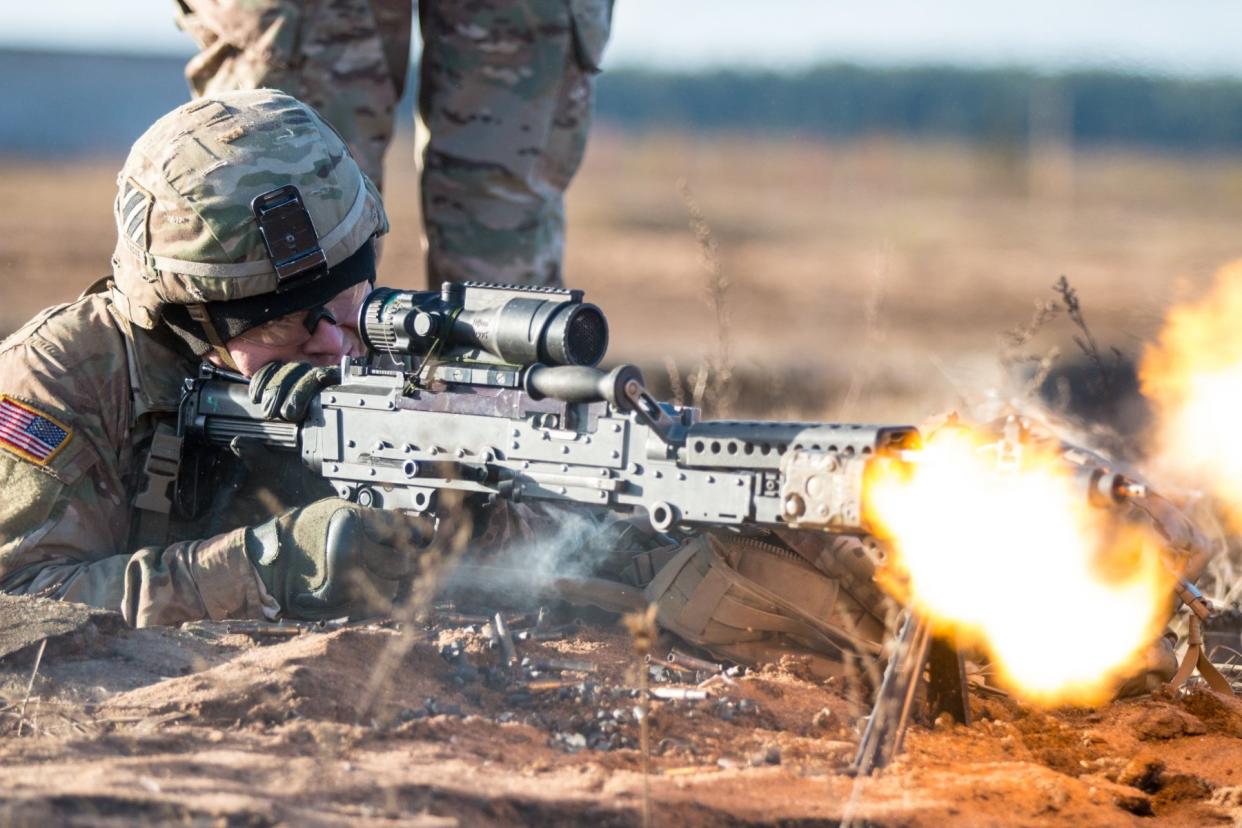The US military might not be the best in the world anymore, according to an army captain

US Army/Staff Sgt. Michael Behlin
At the squad, platoon, and company level, the U.S. Army is not as good as its allies, reports an Army captain. “American units are not as prepared or ready for combat as their multinational partners are at company level and below,” writes Capt. J. Scott Metz. “Many of our allies, and likely some of our potential enemies, are now tactically better than we are at company level and below because we do not train enough at home station.”
In other words, they don’t learn the fundamentals of maneuver before going for higher training at the Joint Multinational Readiness Center (JMRC), the big U.S. Army training base in Hohenfels, Germany. He should know. Until recently, Capt. Metz was an observer/controller/trainer at the JMRC. He notes that he has worked with units from 11 nations.
Here’s one of his examples. “Units default to conducting on-line frontal assaults because that’s all they have practiced,” he writes. In one rotation, a unit “defaulted to a frontal assault in the open without using terrain to their advantage in every engagement. In one of those engagements, a platoon sat static in the open, engaging an enemy Leopard tank. The Leopard fired some 10 times from 10 locations in 60 seconds and never stopped moving while taking concealed routes to and from multiple alternate firing positions.” He adds, “I’ve never seen an American tank do anything like that at JMRC.”
Metz blames senior Army leaders who claim that readiness is their top priority yet don’t give small units sufficient time to train enough to be genuinely ready. He is speaking truth to power.
By the way, Armor magazine deserves a Best Defense 21-laptop salute. This is the second time that it recently has printed a tough, informed article that challenges the prevailing wisdom. Doing that is a big part of the role of military professional journals, but they don’t always carry it out.
NOW WATCH: South Korea requires all males to serve in the military — here's what it's like
See Also:

 Yahoo News
Yahoo News 

